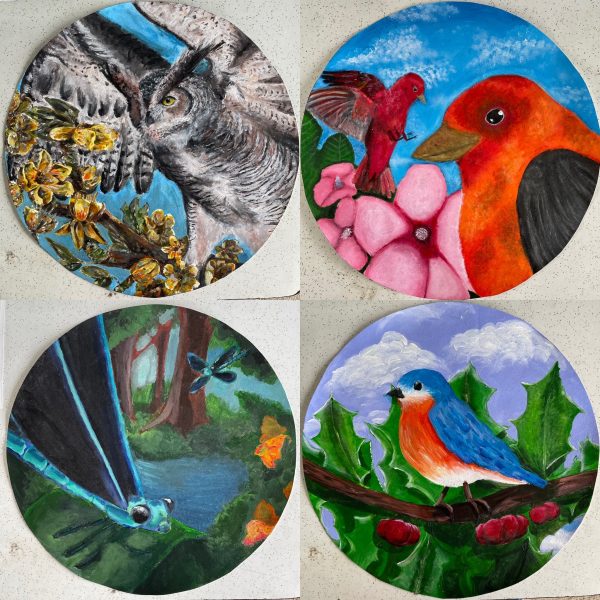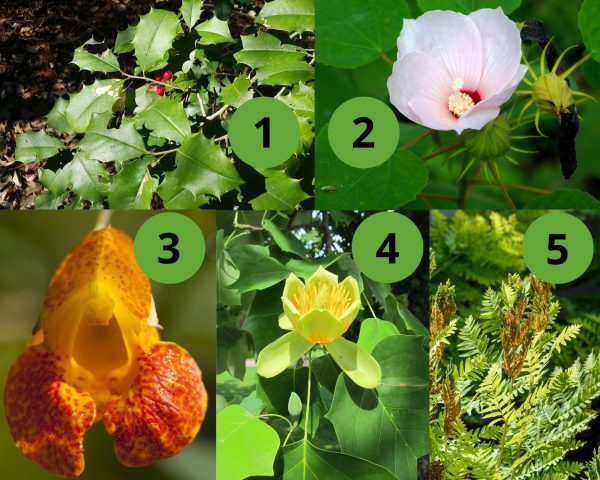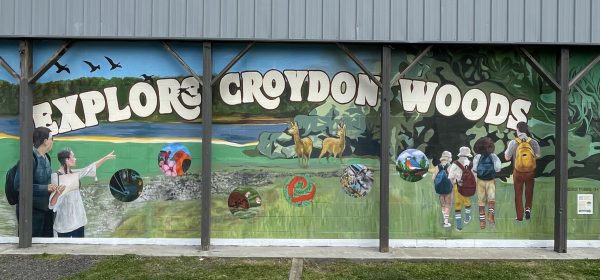Croydon Woods Mural
Welcome to Croydon Woods!
Croydon Woods is one of the last remaining Coastal Plain Forests in southeastern Pennsylvania, and is an 80-acre preserve that is home to over 300 species of plants, mammals, reptiles, birds, and insects. It is a superfund site that has been reclaimed, rehabilitated, and turned into a vital community asset, with scenic trails and an outdoor classroom.
The New Croydon Woods Mural

Our mural, located at the Bristol baseball fields (near the Keystone Elementary entrance to Heritage Conservancy’s Croydon Woods Nature Preserve) was unveiled in spring of 2024. It is a community project that highlights the biodiversity of Croydon Woods. Our mural showcases some of the many species we have documented in this unique and valuable habitat. It also invites students, neighbors, and people visiting the Little League fields to explore nearby Croydon Woods and its lovely hiking trails.
The mural is a collaboration with Bucks County artist Jean-Marc Dubus and Truman High School student artists, who painted the circle inserts that highlight some of the many species of flora and fauna you may find as you walk in this nature preserve.
About the Species in our Mural
Look for these animals at Croydon Woods:
- Great Horned Owl
These large nocturnal hunters use their excellent night vision and hearing to prey on the many animals that inhabit Croydon Woods. You may hear them calling, especially in winter, near dawn and dusk. - Scarlet Tanager
Males are bright red and black coloration and females are greenish-yellow. They spend their time hunting insects in the forest canopy and rely on larger tracts of forest like Croydon Woods to breed and raise their young. - Ebony Jewelwing
These damselflies are related to dragonflies. They prey on other insects and rely on healthy streams to reproduce. Males have a metallic blue body and females have a white dot near the tips of their wings. - Eastern Bluebird
These birds live in Croydon Woods year-round, surviving on berries in the winter. Bluebirds are often seen in the meadow where they hunt insects to feed their young in holes which are in trees or nest boxes.
If you are lucky, you may spot turtles, salamanders, and many other types of birds and insects!

Look for these plants at Croydon Woods:
- American Holly
This evergreen broadleaf tree has spike-tipped leaves. Female trees produce bright red berries that attract birds during the winter months, when resources are scarce. - Swamp Rose Mallow
This showy wetland perennial has large white-to-pink flowers that attract various pollinators during summer, including hummingbirds. - Jewelweed
This annual orange flower forms dense stands in wet habitats. Also known as touch-me-nots, the flower’s seed capsules explode with a slight touch, dispersing their seeds. - Tulip Tree
This tree can reach heights of over 150 feet, making it one of our tallest. It is named for its tulip-like flowers, which benefit pollinators in spring and is a host plant for the eastern tiger swallowtail butterfly. - Royal Fern
This distinctive fern has a unique texture. It is tall, with fronds reaching 6 feet long, and separate golden fertile fronds near its center.
Learn more about Croydon Woods
Read more about Croydon Woods.
This mural is a collaboration of Heritage Conservancy, Jean-Marc Dubus, student artists from the Truman High School Art Club, and community members who shared feedback and ideas. Read more about Jean-Marc’s work and the story of the mural.


The project was made possible with funding from the Alliance for Watershed Education and the William Penn Foundation.

